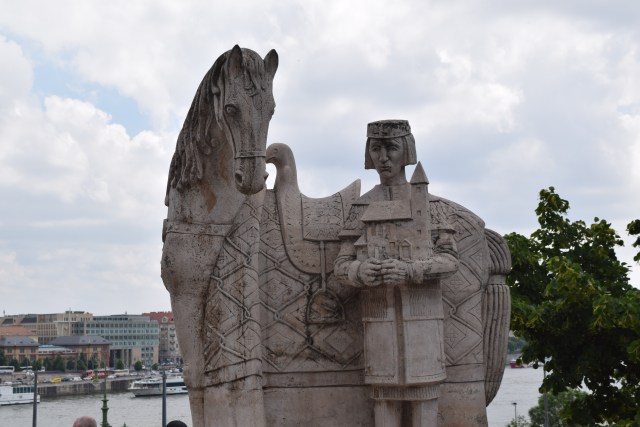Heroes’ Square, or Hosok tere in Hungarian, is one of the main squares in Budapest and is located next to the city park. It was created in 1896 to commemorate the 1,000th anniversary of Hungary. Sitting in the middle of the square is the Millennium Monument and the Museum of Fine Arts and the Palace of Art sit on opposite sides of the square. At the time that Heroes’ Square was created, Hungary was still part of the Austro-Hungarian Empire and some of the statues in the square today replaced those that paid tribute to the Austrian Hapsburg dynasty.




We took the underground to the station that is across the street from Heroes’ Square, which is the easiest way to get to the square and city park from downtown. On the day that we visited the square, there was a demonstration going on advocating for peace. The colorful flags surrounding the tomb-like Memorial Stone, which is not an actual tomb, but meant as a tribute to all of those who died protecting Hungary over its 1,000 year history.




There are a series of statues on either side of the Millennium Monument. On top of the columns on the left is a male statue that represents a symbol of war and on the of the columns on the right is a female statue representing peace. In between each of the columns are statues of historic figures in Hungarians history along with a mural below their statue meant to represent their major accomplishment. In addition to the columns with their statues, the base of the monument also has statues depicting the seven chieftains of the tribes who originally founded Hungary.




Visiting Heroes’ Square is definitely fascinating on its own, but we would highly recommend that you combine it with a tour of the city park. The weather wasn’t quite warm enough on the day that we were there, but there are paddle boats that can be rented to go out onto the lake. There is also the Vajdahunyad Castle and the Budapest Zoo are also located in the park. It is also just a nice place to spend a couple of hours walking the paths and enjoying the scenery. Depending upon how much you decide to see while there, you can easily spend an entire day at the park.






























